George mailed me recently saying “I would like to point out the value of using garden compost or worm compost over winter for wildlife”. One of the interesting things I have found about writing this online diary is the comments and feedback via email I receive. I am finding I am learning with each post I publish. Most gardeners make their own compost but this is something I have not had much success with – although I do try.
Having a garden that has very few earthworms after the New Zealand Flatworm arrived over ten years ago I found his mail very interesting indeed. No, he didn’t mention the flatworm but I still have my own vivid memories of that which you can read about in this post. I am also republishing the photo below so you can look out for it as it is one piece of wildlife you don’t want in your compost!
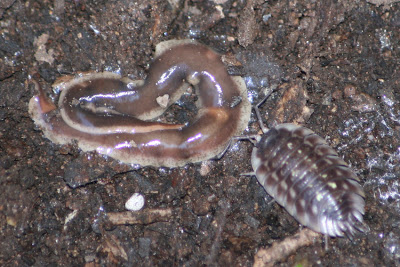 George began by telling me how he had watched a bird, the chiff chaff, in his garden as it fed on fungus gnats from the mulch of compost he puts around his plants and shrubs in autumn. I can picture that scene quite easily as I have often watched the tiny wren find food from the edges of my tiny pond. I hope one day to publish some photos of it there. However, I didn’t picture what else can be found in his compost and how valuable it can be as food for some birds during the winter months when they really need all the food they can get simply to survive a cold night! He continued:
George began by telling me how he had watched a bird, the chiff chaff, in his garden as it fed on fungus gnats from the mulch of compost he puts around his plants and shrubs in autumn. I can picture that scene quite easily as I have often watched the tiny wren find food from the edges of my tiny pond. I hope one day to publish some photos of it there. However, I didn’t picture what else can be found in his compost and how valuable it can be as food for some birds during the winter months when they really need all the food they can get simply to survive a cold night! He continued:
“Within the worm compost and garden compost are many species of invertebrates that live in such matter, worms, enchytraieds, (pot worms) earwigs, spiders, centipedes, millipedes, numerous flies, larvae of all kinds of species and small bugs, providing useful food for our insectivorous birds. The compost mulch, being home made and containing no peat or chemicals is truly teeming with life. Robins, dunnocks, thrushes, blackbirds are regular visitors to the mulched areas. Even the great tit and blue tits venture down sometimes to feast upon the rich pickings”.
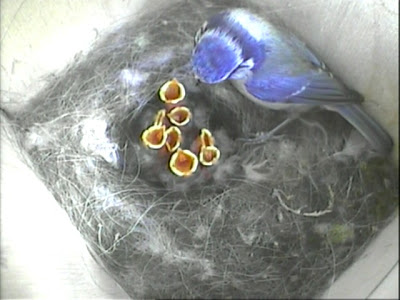 Okay, I have to say that when he mentioned the Blue Tits he caught my attention. We have nestboxes that the Blue Tits have used in my garden and if you follow my garden diary you will know that we had an unsuccessful brood of eight chicks last year. We watched as the Blue Tit pair looked everywhere to find food for their young. Sadly they were not the only pair that struggled last year.
Okay, I have to say that when he mentioned the Blue Tits he caught my attention. We have nestboxes that the Blue Tits have used in my garden and if you follow my garden diary you will know that we had an unsuccessful brood of eight chicks last year. We watched as the Blue Tit pair looked everywhere to find food for their young. Sadly they were not the only pair that struggled last year.
If you are like George and have a passion for wildlife and enjoy your garden you may be interested in his wormery and how he makes his compost:
“The garden compost is made from weeds, grass etc, and the worm compost is made from all of my food, waste, cardboard boxes and dead tree leaves. Nothing goes to waste in my house. Vermicomposting food waste, not only provides a nutrient rich valuable compost, and food supply for our bird friends, it saves landfill space, reduces toxic leachates entering our waterways and reduces the amount of methane, a potent greenhouse gas entering the atmosphere. Over the winter months the worms pull down the compost and mix it with the soil enriching and helping it to retain moisture. A real win win situation for a change!
“I used to use plastic wormeries but now after the smells and dying worms use a wooden one called the waste buster. It even has a window in it for kids to see into the underworld!” Oops, sorry I hope you are not reading this over lunch! I like the sound of the windows for the kids, George, which would be a great idea for teachers when the school children are studying bugs.
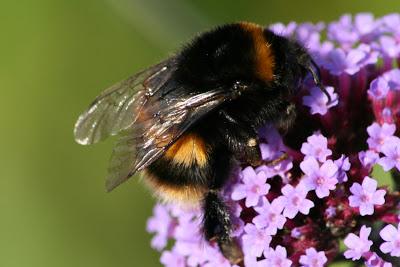 Gardeners v wildlife – George then briefly mentions other non-organic mulches that gardeners use like stones, plastic and other manmade woven materials often used as weed suppressants which are generally not thought of as an aid to wildlife. Okay, I’m opening up a ‘can of worms here’ – sorry couldn’t resist the pun! My view here is that there is a place for both in our gardens. As I have said many times I am a gardener that is sharing my garden with its visiting birds and wildlife. I have been planting plants since the age of ten and in doing so have supplied a constant food source for many insects alone far less the berries for birds. I am glad you brought this up George as I feel all discussion on wildlife in the garden ultimately raises its profile.
Gardeners v wildlife – George then briefly mentions other non-organic mulches that gardeners use like stones, plastic and other manmade woven materials often used as weed suppressants which are generally not thought of as an aid to wildlife. Okay, I’m opening up a ‘can of worms here’ – sorry couldn’t resist the pun! My view here is that there is a place for both in our gardens. As I have said many times I am a gardener that is sharing my garden with its visiting birds and wildlife. I have been planting plants since the age of ten and in doing so have supplied a constant food source for many insects alone far less the berries for birds. I am glad you brought this up George as I feel all discussion on wildlife in the garden ultimately raises its profile.
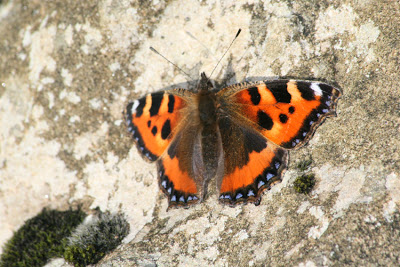 I also have sandstone rocks in my garden (dug up in fields by a local farmer) and if I ever move them (which I do) they have much in the way of wildlife below them which run for cover as I lift the stone. Last year butterflies were often seen towards the end of the day sunbathing on both the larger rocks and strangely on the gravel on the ground which was particularly funny to see – no photos sorry.
I also have sandstone rocks in my garden (dug up in fields by a local farmer) and if I ever move them (which I do) they have much in the way of wildlife below them which run for cover as I lift the stone. Last year butterflies were often seen towards the end of the day sunbathing on both the larger rocks and strangely on the gravel on the ground which was particularly funny to see – no photos sorry.
Using mulches of gravel and stone in my garden has enabled me to grow more plants as it has cut down the amount of time required to keep these areas. I don’t keep a wild and weedy garden but nor do I keep a perfectly manicured one either. I have also found that many plants in my garden that self seed freely in the gravel like allium, borage, red campion and aquilegia are actually the ones that attract the bees and butterflies. So I still have a result for wildlife even using gravel – but I can still see your point George if a whole garden was covered in this way. I also have areas of bare soil and ground covering plants and also areas of forest bark below some of my bird feeders which the birds turn over regularly. I feel we can find a balance in the garden that suits our desire to have it look nice and at the same time have wildlife even if when we don’t see it.
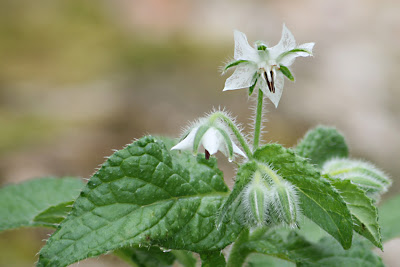 Garden make-over programmes are perhaps thought of as a bad thing for many who enjoy wildlife. However, on the other hand by adding new flowering plants and shrubs and a piece of fresh lawn to replace an over grown garden where plants have no light or space to grow can that really be a bad thing? I would guess that there are a lot more gardens with plants inspired by these programmes which are very likely to have new wildlife like bees and butterflies visiting now. You only need to walk around the garden nurseries and centres to see the huge variety of plants that are available now which I would definitely say is a direct result of garden shows and make-over programmes.
Garden make-over programmes are perhaps thought of as a bad thing for many who enjoy wildlife. However, on the other hand by adding new flowering plants and shrubs and a piece of fresh lawn to replace an over grown garden where plants have no light or space to grow can that really be a bad thing? I would guess that there are a lot more gardens with plants inspired by these programmes which are very likely to have new wildlife like bees and butterflies visiting now. You only need to walk around the garden nurseries and centres to see the huge variety of plants that are available now which I would definitely say is a direct result of garden shows and make-over programmes.
On reading other garden blogs I have found that there are many gardeners that grow organically and grow their gardens specifically for wildlife. I always enjoy reading about what they do and it is a great way to get tips for your own garden. It is fantastic that we can all share in the experiences of others online like this. George mentions the organic mulches that we can use for example “leafmould, leaf litter, straw, composted wood chips, hay, grass cuttings from chemical free lawns, shredded newspaper, composted shredded bark, shredded cardboard and manures as well as the worm and garden composts”. That’s really quite a list to choose from.
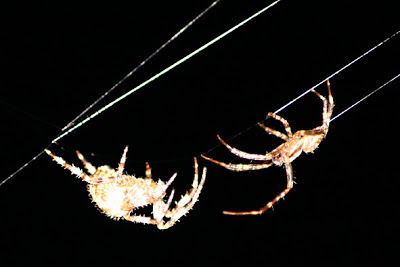 Finally, I would like to end this post with more on the value of using compost mulches for wildlife during the winter months from George:
Finally, I would like to end this post with more on the value of using compost mulches for wildlife during the winter months from George:
“The microbial activities within soils and compost heaps have similarities and some unique characteristics. Laying an organic mulch on top of soil marries the two systems to some extent which in turn can benefit the larger wildlife, such as birds. In and around plant roots the area is teeming with microbes. Earthworms are predators of microbes and are attracted to such ‘hot spots’. Hence birds will hunt for earthworms in this area. I have seen blackbirds pull out onion sets from the soil to eat invertebrates and earthworms that themselves were feeding on the soil microbes and detritus underneath the sets. Compost heaps would certainly not have such ‘hot spots’ but garden compost, laid on top of it would enable a plant to live in soil conditions that encouraged and promoted root growth, and therefore ‘hot spots’! The mulch will be colonised by wildlife who use it for dispersal, shelter, breeding or foraging. In fact many invertebrates will complete their whole life cycle under your very feet!”
Hi Shirl. That George did get you to thinking as I am sure there will be others thinking about all this too.
I have a compost pile that has all kinds of critters, bugs etc. The Carolina Wren that lives around here, as well as other birds, picks around on that pile a lot.
The Robins departed from the garden early this year due to the drought. It was sad to see them go but I couldn’t water the lawn enough to keep the worms high enough for them to feed here. Sigh
All this compost talk reminds me that at the park where we walk Luna there is a huge pile of mulched trees. It is getting hot with all this rain. It was cooking today with smoke rising from the pile. Scary
Hi again, Lisa 🙂
Yes, it did and funnily enough one thing I didn’t mention again was the advantage of not having to water the plants as much if they are mulched – which helps in times of drought.
I am looking forward to hearing more compost stories with this post – thanks for sharing yours. Funnily enough when I began my post I searched for images of compost heaps and came across quite a large steaming one so I can very easily imagine the one in your park – yes they do look scary 😀
Sorry to hear you lost your Robins early – where do they go? Do you not have them all year usually? From photos on other American blogs they look like they come to gardens in groups like our starlings, if so I’m sure the garden must have been quiet without them!
Very interesting post. I am an avid “composter”. In a few weeks we have a new course teaching the latest news in making compost. I’ll certainly join it again. BTW I also like to mulch my borders (less watering, less weeds!).
Shirl, this is my first visit to your blog and it’s wonderful! I really enjoyed my visit and I’ll be back!
Hi again, Barbara and hello Kylee 🙂
Barbara – Thank-you, I hoped I’d hear from gardeners on this one. Good to hear that in Switzerland there are courses on making compost – perhaps there are ones in some areas of the UK too. Yes, mulching has quite a few advantages doesn’t it – I too like it for less watering and weeds 😀
Kylee – Thank-you – nice to see you too! I have just popped over to your blog and I have a feeling that I will be a regular visitor to you in the future. I completely understand the whole change of style thing as I have changed lots on mine and the colour backgrounds are the bravest. A word of warning – once you start you will always been tweaking things. It’s fun though 😀
That is interesting stuff. I’m always pleased to see all the bugs and worms in my allotment compost heap, as I figure it indicates it is healthy, but I hadn’t thought of it in this way before.
As soon as we had topped up one of our beds the other week with some of ours there was a robin and then a blue tit in it picking around, so I guess they do appreciate it!
Hi again, Urbanbumpkin 🙂
I hadn’t thought of this either. George mailed me again after this with some more info on compost that I’d never thought of. I will post on that in a week or two 😀